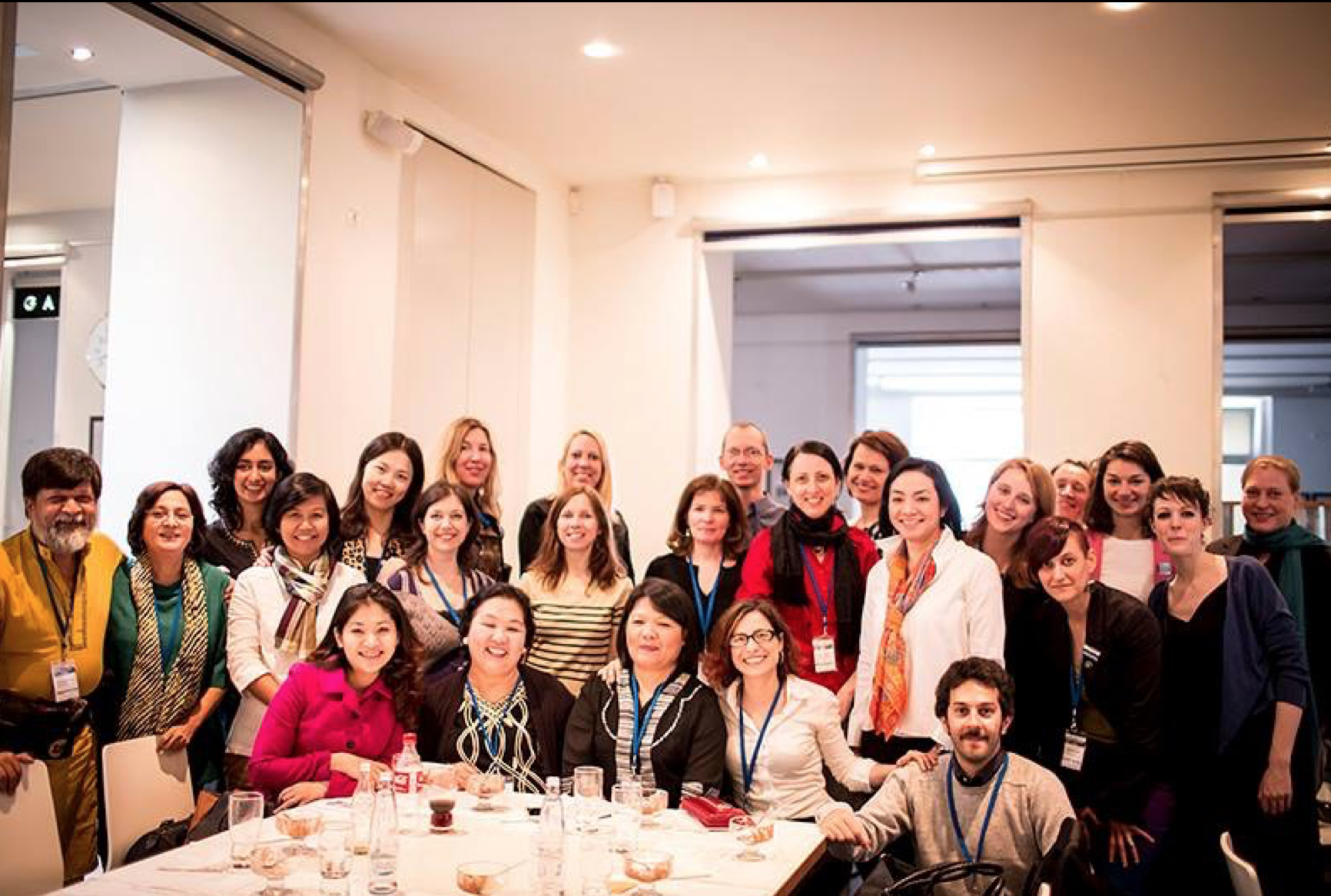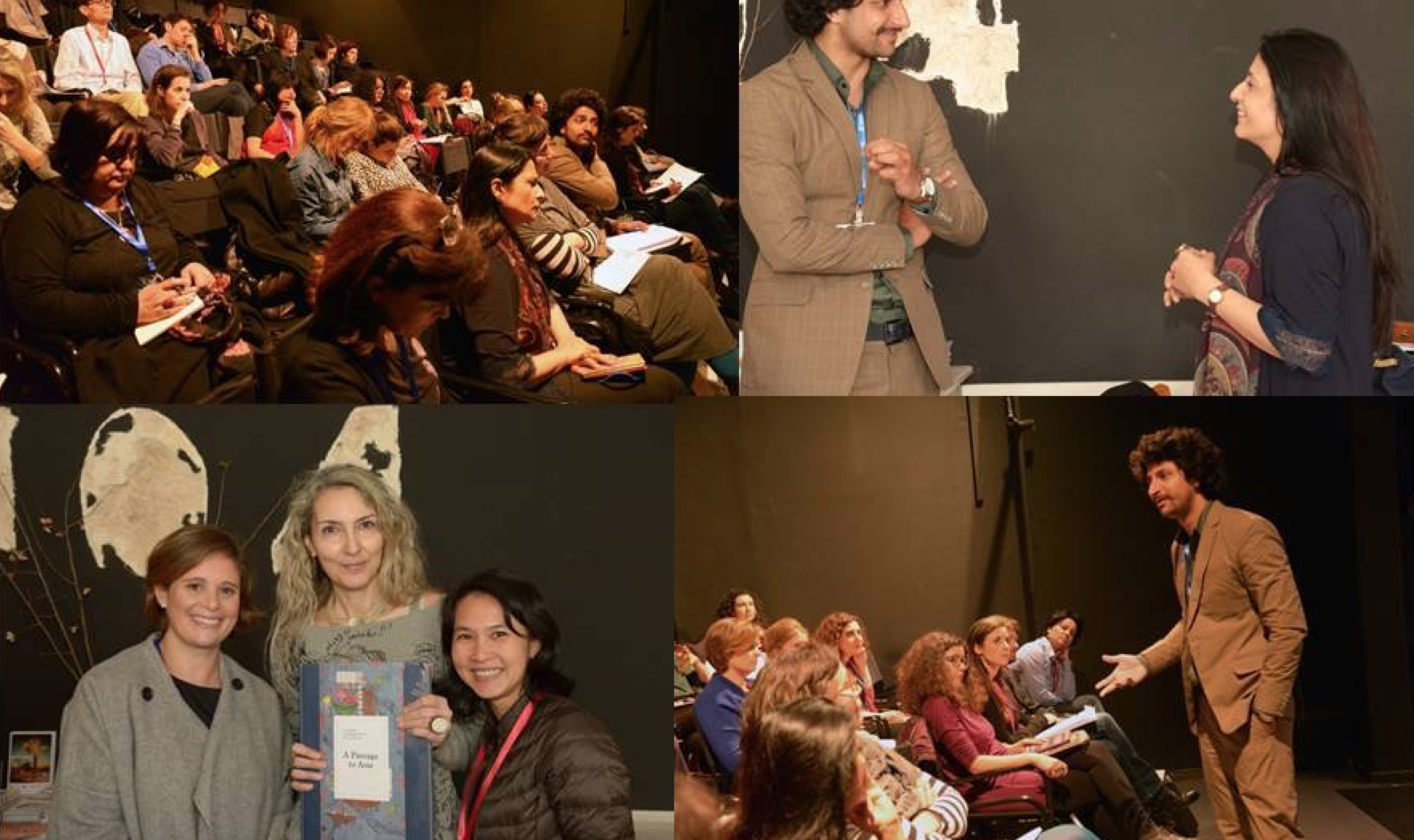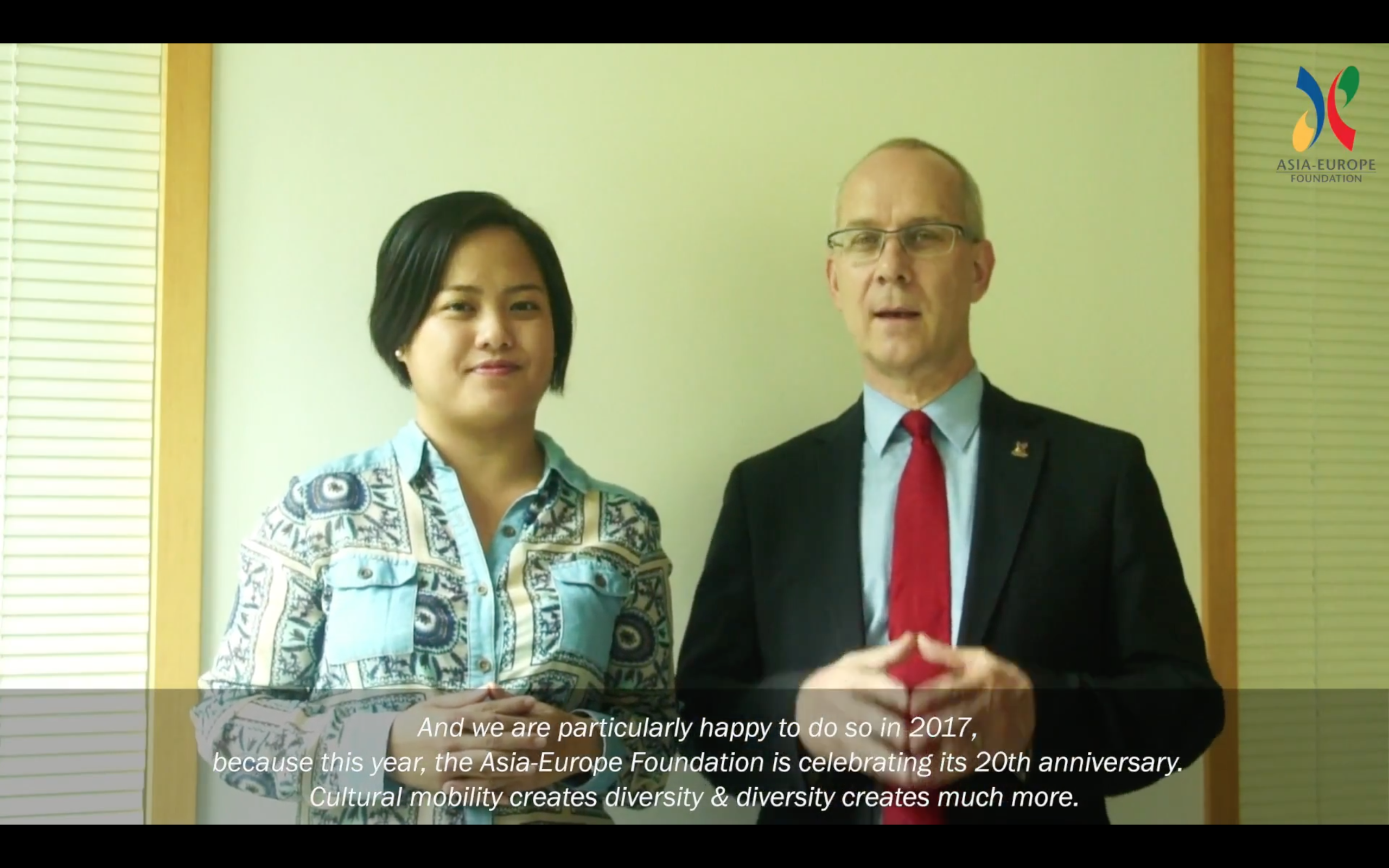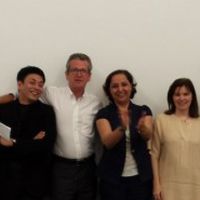Cultural Mobility in Asia & Europe

Cultural mobility or the temporary movement of artists & cultural professionals across international borders is an integral part of general artistic practice today (Ericarts, 2008, Mobility Matters). Now, more than ever, artists need to be able to travel internationally for exchange & dialogue, especially when for many practitioners, mobility is not only a matter of choice, but a basic necessity for professional growth & co-operation.
But funding for cultural mobility remains a huge challenge. As we at the Asia-Europe Foundation (ASEF) launch the 2nd edition of Mobility First! - ASEF Cultural Mobility Initiative, we will look back at how cultural mobility has become an area of mutual interest among international cultural organisations in the past 5 years, as well as key cultural mobility trends in the practice of artists & cultural professionals in the Asia-Europe context.
Cultural mobility dialogue in the Asia-Europe context
In the Asia-Europe context, there have been 4 major multilateral meetings on the topic of cultural mobility. In the recently concluded Trans-making Spring Academy (5-8 March 2018, Valencia, Spain), Herman Bashiron MENDOLICCHIO, Research Fellow, University of Barcelona, spoke about these 4 meetings to show the growing dialogue on cultural mobility, in his joint presentation with ASEF on the topic:
- Meeting of Asian & European Cultural Mobility Funders in Prague, Czech Republic (2013)
- In 2013, through its Creative Encounters programme, the Asia-Europe Foundation (ASEF) & its partners, Arts Network Asia (ANA) & Trans Europe Halles (TEH), supported the Platform for Asian & European Cultural Mobility Funders hosted by the City of Prague.
- The meeting was organised by Art Theatre Institute (Czech Republic), Kelola Foundation (Indonesia), and On The Move (Belgium).
- The meeting brought together more than 35 representatives of leading funding organisations in Asia & Europe & the brought to the fore the mutual interest of major cultural stakeholders in both continents
- The meeting was the beginning of a multilateral ongoing dialogue about cultural mobility & resulted in recommendations for policy makers & funders based on the needs & gaps in the cultural sector
- The key findings of this meeting can be read here

- Meeting of Asian & European Cultural Mobility Funders in Melbourne, Australia (2014)
- In 2014, through its Creative Networks programme, the Asia-Europe Foundation (ASEF) supported the inaugural meeting of the Asia-Australia-Europe Creative Residency network
- In the framework of this meeting, On-The-Move, Asialink and Res Artis organised the 2nd Meeting of Asian & European Cultural Mobility Funders hosted by the Australia Council for the Arts and co-organised by IETM
- The meeting brought together more than 50 cultural mobility funders & stakeholders as well as residency professionals from Europe, Asia and Australia to brainstorm on the topic of access & reciprocity in relation to cultural mobility
- The key findings of the meeting can be read here

3. The Canary Islands Declaration on Artistic and Cultural Mobility in Santa Cruz de Tenerife (2014)
- Also in 2014, 6 independent cultural mobility funds from Asia, Europe, Africa, & the Arab world met in Santa Cruz de Tenerife (Canary Islands)
- The idea was initiated by the Roberto Cimetta Fund, in partnership with the Association of Cultural Managers of the Canary Islands
- The 8 principles which comprise the Declaration can be read here

- Meeting of the Artistic Mobility Alliance or SEAAA Mobility Platform in Athens, Greece (2015)
- In 2015, through its Creative Networks programme, the Asia-Europe Foundation (ASEF) supported the Artistic Mobility Alliance or SEAAA Mobility Platform
- The project partners include Australia Council for the Arts, Korea Arts Management Service, Valletta 2018 Foundation, Roberto Cimetta Fund, Arts Network Asia, The Russian Theatre Union, and Theatre Entropia
- The meeting gathered over 60 cultural mobility stakeholders & the goal was to create a common fund to support the mobility of artists and cultural professionals with a focus on South Europe, Asia and Australia
- The various institutions were not able to materialise the main goal of multilateral co-operation, however, new forms of bilateral co-operations came about as a result of the meeting

Mobility First! is launched
2 years after the Athens meeting, in 2017, the Asia-Europe Foundation (ASEF) celebrates its 20th anniversary & builds on its continued support to cultural mobility by launching Mobility First! - ASEF Cultural Mobility Initiative, a fund that supports international travel for artists & cultural professionals in the Asia-Europe & intra-Asia contexts.

In its first year, Mobility First! enabled 73 artists & cultural practitioners to participate in 33 events across 23 countries in Asia & Europe. The supported practitioners attended a wide range of cultural activities such as conferences, workshops, residencies, festivals and networking meetings in the 2 regions.
After completing its first year, we have highlighted some key observations & trends in Asia-Europe cultural mobility based on applications received for Mobility First!:
There is a strong awareness & willingness for international exchange & co-operation
Mobility First! received a total of 830 applications from 46 Asian & European countries which are members of the Asia-Europe Meeting (ASEM). We received applications from 26 out of 30 European member countries, & from 20 out of 21 Asian member countries. It is a positive sign to receive applications from nearly all 51 ASEM countries.
After all, Mobility First! is funded by multilateral co-operation among its members & the fund is meant to benefit the nationals of these 51 countries. Furthermore, the response confirms that there is a strong awareness & willingness for international exchange & co-operation between arts practitioners in the 2 regions.
Mobility First! supports both outgoing mobility and incoming mobility through 2 kinds of applications: from Individuals & from Organisations. Individual applications are made directly by artists & cultural professionals who have been invited to or have been selected for participation in a cultural event abroad (outgoing). On the other hand, Organisations are able to apply for up to 5 artists & cultural professionals who they want to participate in an event they are organising in their country (incoming).
For outgoing mobility applications, we received a total of 530 applications made directly by Individual artists & cultural professionals. On the other hand, 84 Organisations applied for a total of 300 people to participate in their events.
However, there seems to be more opportunities for artists versus cultural professionals
Mobility First! is an opportunity for both artists & cultural professionals. An Artist refers to a person who produces artworks in any field of the arts. Cultural professional refers to a person working in the field of arts & culture who is not directly involved in the production of artworks e.g. curators, arts writers, arts managers, researchers, policy makers etc.
In 2017, 70% of all applications were from artists who have been invited to showcase their art abroad. Since Mobility First! fills the gap of travel costs, applicants need to have already been selected for the event they are going to. We can then infer from this statistic that artists get more invitations from abroad as compared to their cultural professional counterparts.
In terms of selection, we have supported more or less a balanced proportion of practitioners who produce art & have been invited to showcase it, as well as those who don’t produce art & have been invited for conferences, trainings, research trips & the like.
There is a rise in female & youth representation in the arts & culture sector
There were slightly more females who applied (52%) versus males. This is a positive trend to observe that female representation is on the rise from the past, as well as the rise in youth/early career practitioners (54%). The ratio of practitioners supported for gender & age is the same as the ratio of applications.
Keeping gender parity & youth inclusion in mind, Mobility First! encourages applications that show how their travel will benefit their professional development, & show potential for long-term impact in the arts sector, meaning it will benefit not only them but the community too (multiplier effect).
Most Europeans want to go to China
Contrary to expectations, Europe-to-Asia mobility routes comprised majority (39%) of all applications we received, followed by Asia-to-Europe (33%), & intra-Asia routes (24%). Given that mobility funding gaps are wider in Asia, we expected application statistics for mobility routes to be the other way around.
Where did the Europeans want to go? China is the most popular destination for Europeans, with 21% of 325 Europe to Asia applications in favour of China. This is followed by India (17%), Japan (14%) & Korea (10%).
One can infer 2 things from this trend: 1) The arts & culture scene in China is extremely vibrant, with many events that attract international participants; 2) When many Europeans think about travelling to Asia, the first (and only?) destination that comes to mind in China. If the first inference is true, then that is great. If the second is true, then the trend poses a question of perception.
Even most Asians want to go to China, but regional travel is overall popular
Asia-to-Asia mobility routes comprised 24% of all applications we received. Where in Asia did Asians want to go? Like the Europeans, China is also the most popular destination for Asians, although the statistics are more equally spread out. There is not much difference in the count for China, India, Singapore & Japan as destination countries.
The positive trend observed is that nearly a quarter of all applications are for regional travel in Asia. This is a very good sign because in the past, many Asians always want to go to the faraway lands, & they were not aware of what was going on in their immediate neighbours. A renewed interest in regional travel gives hope for a stronger & more unified Asian identity.
On the other hand, Asia-to-Europe mobility routes comprised 33% of all applications we received. Where in Europe did the Asians want to go? The United Kingdom is the most popular destination for Asians, with 18% out of 272 applications received in favour of the UK. This is followed by France, Germany, & Poland.
While Biennales/Festivals are top choices, there is very low interest from the literary sector
Mobility First! supported 7 types of cultural & artistic activities including from networking & capacity building (training, research trips, partnership meetings), to artwork creation (artists' and writers' residencies) to public presentations (festivals, biennales, conferences).
The most number of applications received were for Biennales / Festivals which comprised the lion’s share, 37% of all applications received. This means that many artists between Asia & Europe are getting invited to present their work (public performances & visual art exhibitions).
Next on the list at 17% is Workshop / Trainings. This category also includes short courses on a variety of specialisations like arts management & curatorial studies. Being 2nd on the list means that Asians & Europeans are increasingly wanting to partake in an educational experience abroad, together with a diverse group of people.
3rd on the list at 15% is conferences. This shows that Asians & Europeans are being invited to speak to a different audience to share their experiences.
Although Artists’ and Writers’ Residencies come 4th on the list, it is important to note that 112 of the 115 Residency applications were for Artists’ Residencies, while only 3 were for Writers’ Residencies. Is there very little interest for cultural mobility from the Literary sector?
Are there not many opportunities for exchange for writers or do they just not know about Mobility First? We hope that as we launch Mobility First in its 2nd year, there would be more applications from the literary sector.
We also hope that applications from nearly all ASEM countries would continue. ASEF holds a special position being the only cultural mobility facilitator & funder in the Asia-Europe context, and being an organisation publicly funded by 51 countries - we are not beholden to support any particular nationality, like say, national arts councils would be.
Cultural Mobility high on the global agenda
At the end of its first year, Mobility First! has gained global recognition for its relevance and impact. In its latest Reshaping Cultural Policies Report (2nd edition), the only global document on trends in cultural development, UNESCO has acknowledged ASEF’s Mobility First! as a “success story” by a multilateral intergovernmental organisation in bridging existing gaps in support of artists' mobility.
We can definitely say with certainty that cultural mobility is high on the agenda of major international organisations, particularly in cultural policy priorities.
UNESCO includes increasing the mobility of artists & cultural professionals as 1 of the 4 main goals in the methodological framework of implementing the UNESCO Convention on the Protection and Promotion of the Diversity of Cultural Expressions (2005). In its latest Reshaping Cultural Policies Report (2nd edition), where Mobility First! was acknowledged, limited funding for cultural mobility has yet again been recognised as a key challenge to international cultural co-operation. However, a positive trend is been observed in mobility opportunities provided through transnational cultural collaborations, with a renewed interest in South-South mobility.
The European Union (EU) supports & complements the actions of its Member States in reducing mobility barriers, providing the suitable environment for it, & ensuring the accessibility of mobility-related information. Since 2008, EU Member States have been working together on artists' mobility through the Open Method of Coordination (OMC), a framework of cooperation facilitating the exchange of good practices & peer-learning in the field of culture.
In the beginning of this article, we saw that many international cultural organisations have mobility as part of their mutual agenda. In a period of 5 years, there have been 4 multilateral meetings about cultural mobility attended by key stakeholders, funders, re-granters, information platforms etc. As we go forward, may the ongoing conversations continue & may more collaborations spring forth to improve access to both funding & information about cultural mobility.
The Mobility First! 2018 Call for Applications is now open. See details here
{"preview_thumbnail":"/sites/default/files/styles/video_embed_wysiwyg_preview/public/video_thumbnails/i6pbiLl_Pi0.jpg?itok=LhrKKGdX","video_url":"https://www.youtube.com/watch?v=i6pbiLl_Pi0&t=6s","settings":{"responsive":1,"width":"854","height":"480","autoplay":0},"settings_summary":["Embedded Video (Responsive)."]}
Similar content
By Fatima Avila and Kerrine Goh
30 Aug 2019
By Kerrine Goh
17 Apr 2020
from - to
30 Mar 2015 - 31 Mar 2015
from - to
09 May 2014 - 12 May 2014




